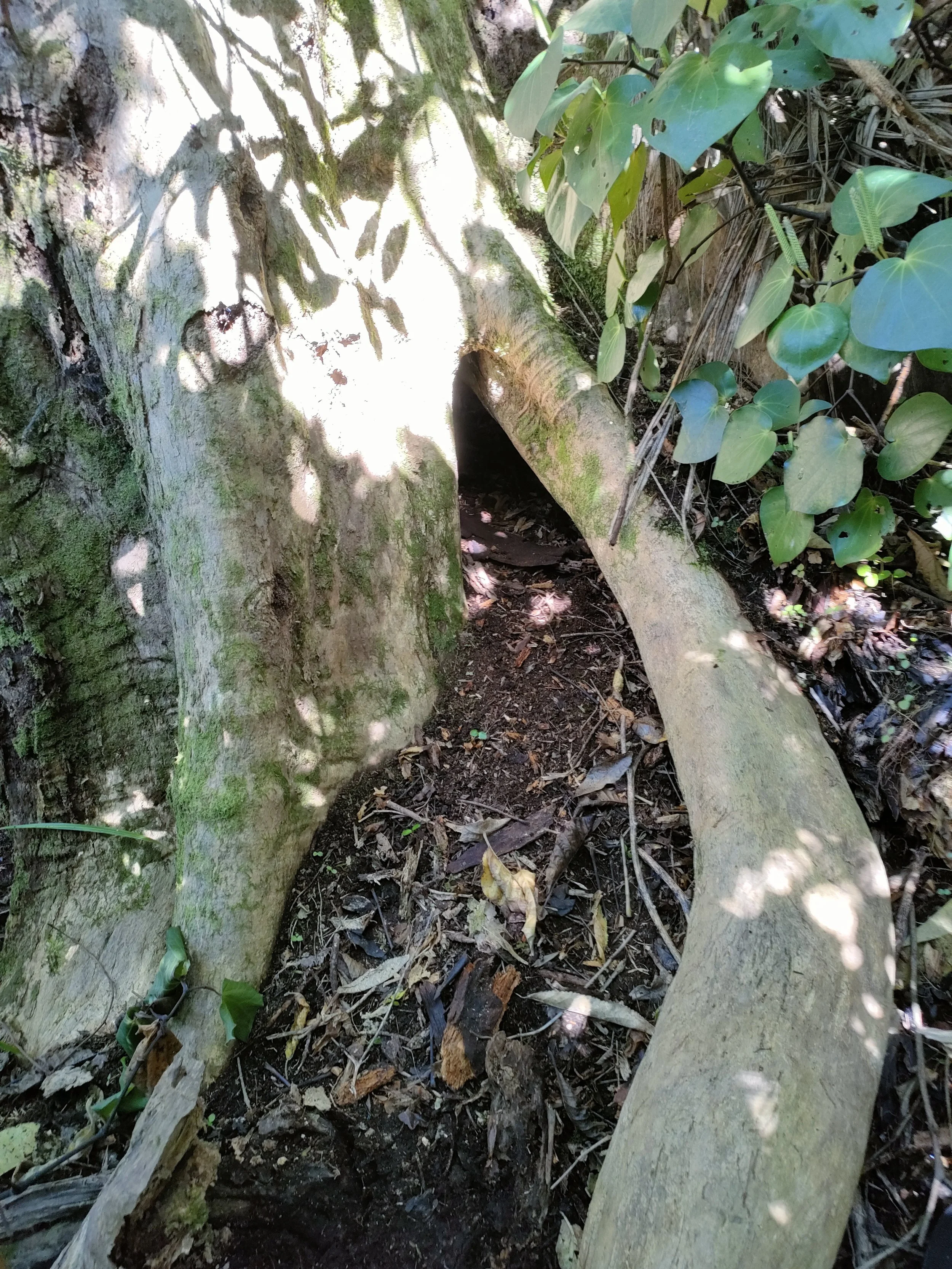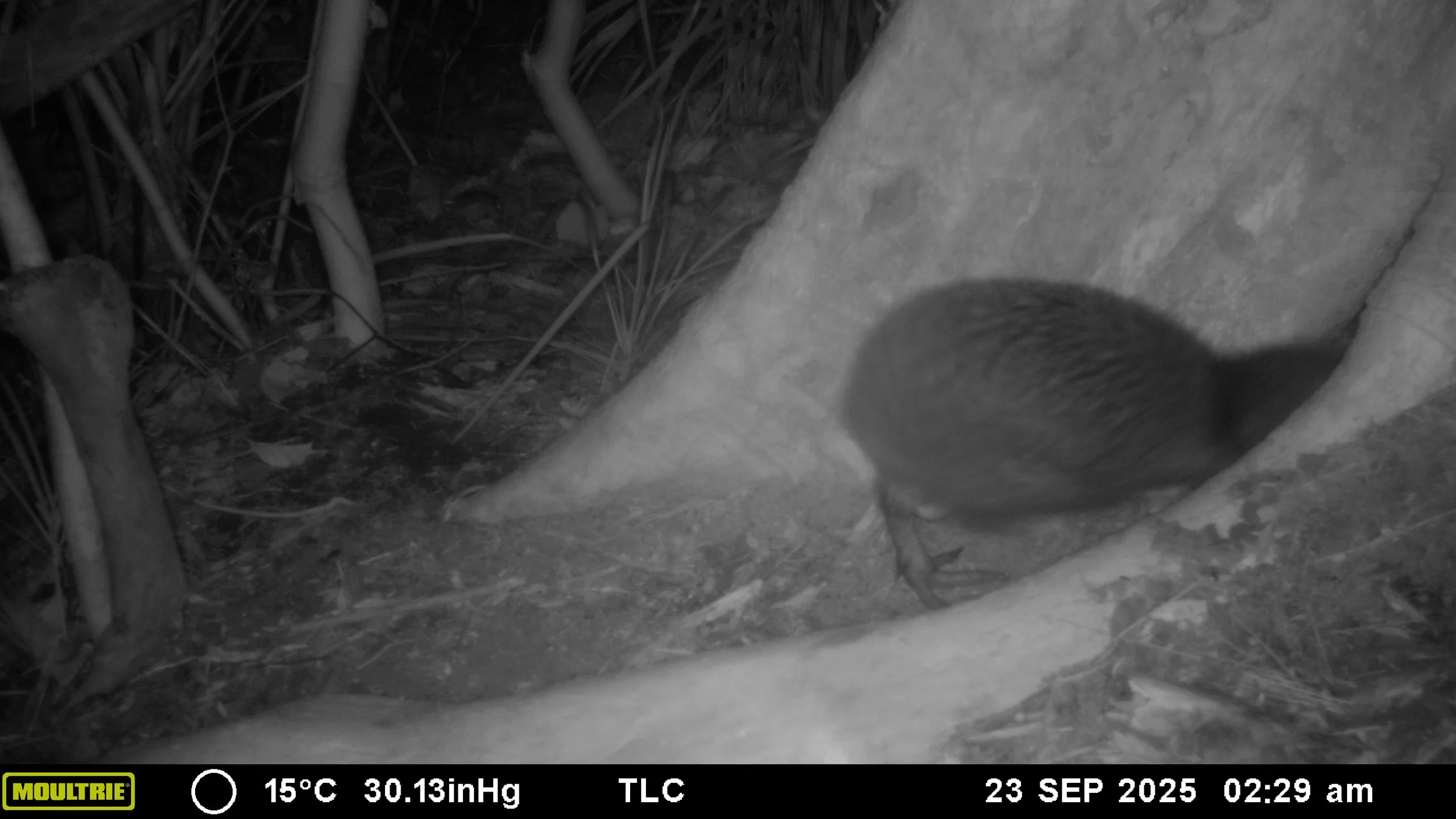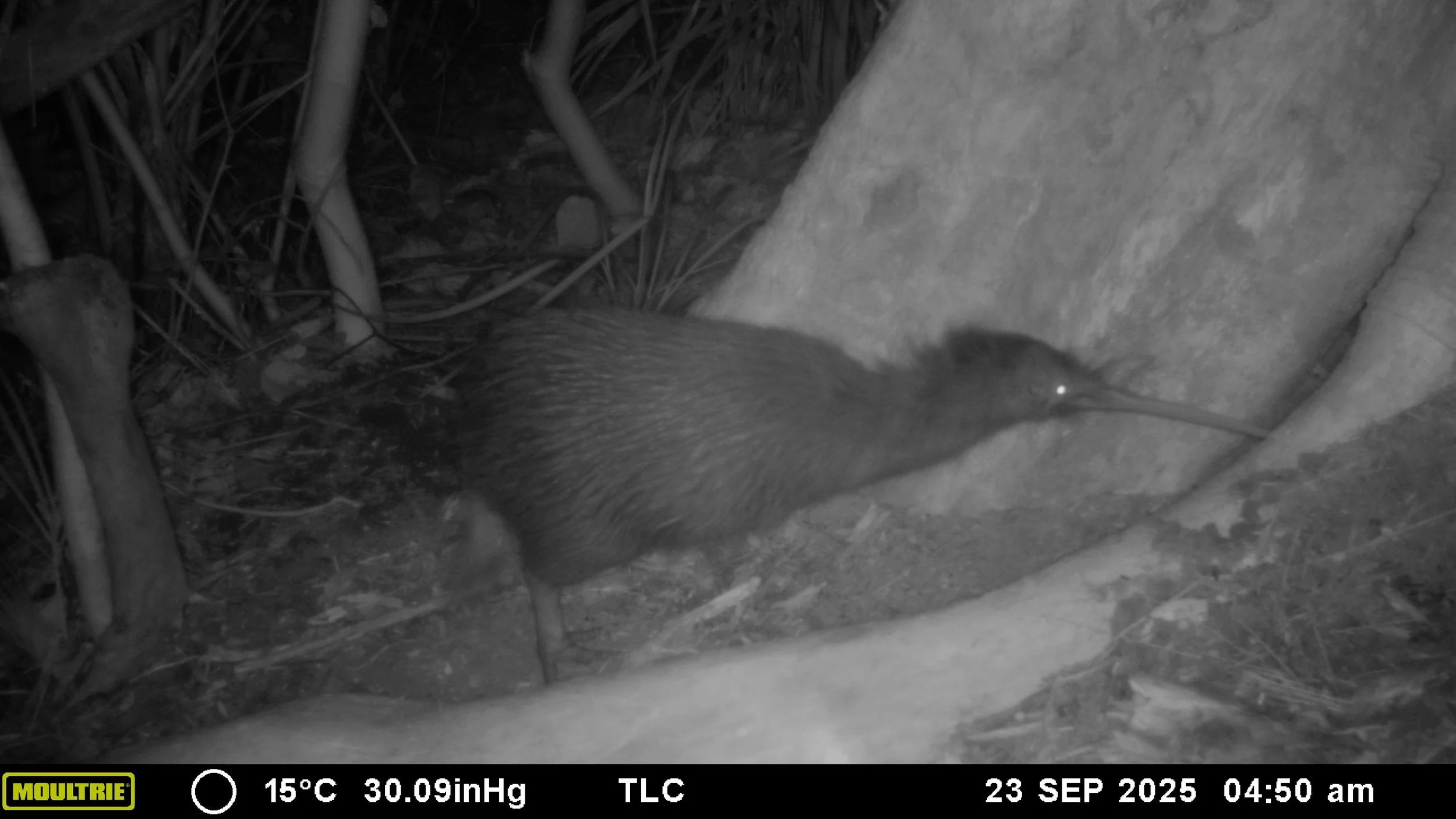Nesting news!
Kiwi news!
What is happening with the local kiwi released last 2025? Well, good news indeed.
Tracking the kiwi released in April 2024 as well as the four kiwi released in May 2025 is continuing. A lot of information can be gathered from the radio-transmitters attached to their robust legs: if a kiwi is walking or resting or …sitting on an egg!
On 9 September Cam confirmed that Te Matā’s transmitter had switched to nesting mode. This kiwi’s activity has dropped down to about 4 hours a night with the rest of his time spent sitting on the egg. His data stream indicates that he started nesting on 27 August, so hopefully we may have a chick before Christmas. And the female Te Matā has chosen is HInemoama, one of the other four kiwis released last May.
The burrow that Te Matā and Hinemoana have made is inside the base of an old Puriri tree stump, with a big hollow center that is open to the sky, but they have burrowed up into a corner that must be warm and dry enough. Trail camera footage shows him heading out for a feed every night at about 11.30pm and returning between 2 and 3am. Unfortunately, the camera also showed a rat and 2 possums entering the burrow. An AT220 trap has been deployed nearby, and already it has a pile of possums and rats under it.
The nesting site
Hinemoana is hanging out nearby and has also been seen on the trail camera entering the burrow, so she and Ta Matā may have a second egg on the way!
Te Mata returning into the nest
Hinemoana enters the nest!
But this is not all. Te Wairoa, released last year, is NESTING TOO!!!! His nest is in an old stump in the valley behind the Tutukaka camp. The nesting signal was detected around mid-September, so it's a recent event! Cam has set up a trail camera on his burrow, which is not an easy site to access. So far, only extreme close-up videos of kiwi feathers have been obtained.
The busy pair Chester and Kiki has split up and they are now on their own.
This update enlivens the spirit after the recent news of a kiwi road kill by the Hugh Crawford reserve.
We really all need to pay attention driving along the coast at night, as we share the road with fragile and precious rare animals.
Please also familiarize yourself with the new bylaws regarding dogs on the beaches this summer!


